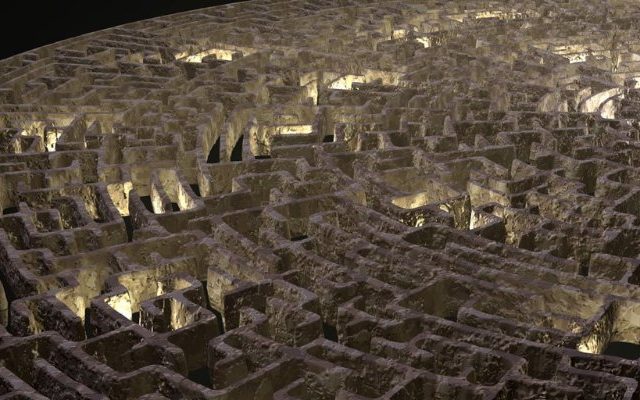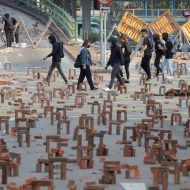
General. Any struggle or movement that poses a serious threat to capitalism and the established order will come under attack by the state. It will face police surveillance, infiltration, disinformation campaigns, cooptation, criminalization, incarceration, and even assassinations. While outright state violence is easy to recognize, surveillance and cooptation are less obvious and much more effective forms of state repression. Because of this, modern counterinsurgency theorists understand and emphasize the centrality of getting into the organizational and decision-making structures of those who oppose them, in order to surveil, disrupt, coopt and redirect those organizations and struggles from the inside. The best security and defense against this counterinsurgency strategy isn’t necessarily more secrecy and isolation, but militants who are educated and empowered to question operational decisions and leadership. More than anything else, operational security lies in the critical thinking skills of the individuals and units that make up the revolutionary organization.
Security Culture. Absolute security is not possible. Therefore, the ability to collectively and individually analyze a changing situation, its potential threats and compromises under varying conditions, is the core of what constitutes good security culture. This approach is in stark contrast to the prevailing approach in revolutionary circles, where a rigid series of secretive behaviors and technologies are posed as “security culture.” But good security is not simply a matter of secrets. While good passwords, codes, encryption, etc. are useful components of an overall security system, if they constitute the basis of the system itself, these very technologies and practices will become that system’s crucial vulnerabilities. Secretive practices can be easily breached by agents of the state; secret meetings can be infiltrated, phones and laptops can be stolen or confiscated, and all electronic communications can be intercepted, stopped, mimicked or altered. Organizations and movements that have not understood this basic fact have been decimated as the tools and approaches that give them the illusion of security, have been turned against them. Furthermore, the prevailing approach to security culture leads to a separation of revolutionary organizations from general populations and mass movements, thus eliminating any notions of mass organizing. While effective security involves secretive organizational practices, it must be kept in mind that, at its heart, security requires, more than anything else, the democratization of security knowledge—that all members be equipped with the critical thinking skills and collective processes necessary for evaluating threats and developing appropriate responses.
Security Measures. Security of all elements of the revolutionary struggle is based upon the principle of preventing the enemy from either knowing of the existence of insurgent forces or of preventing the enemy from being able to infiltrate these forces when their existence is known. Security measures include—
- Careful selection and screening of all accomplices.
- Developing a mass base—without mass support and participation in the insurgent struggle, the clandestine organization becomes isolated and, as a result, vulnerable to state repression.
- Camouflage discipline—the insurgent remains undetected by blending in with the general population in the area of operations. This entails wearing clothes that do not appear different from those of most people in the area of operations. After an action the insurgent should be able to disappear into the population. Camouflage can be enhanced if insurgents can pose as a couple or as a group of friends.
- During an action, insurgents make sure to wear masks and gloves to cover up any identifying features. Immediately after an insurgent leaves the scene of action, if possible, she should hide somewhere nearby, beyond the purview of cameras and witnesses, discard her mask, gloves, and clothes, and change into new, different clothes.
- Compartmentalization—the insurgent organization has a structure that is intentionally segmented, so that information is shared on a strictly need to know basis.
- Proper selection and rigid surveillance of escape routes.
- Counter-surveillance of insurgent sleep sites and installations.
- Thorough training of all in resistance to interrogation.
- Cover stories are used to conceal involvement in insurgent activities. Insurgents always have a reliable and credible cover story to explain why they are where they are, how they got there, where they are going, etc.
Dispersion.
- Insurgents avoid large concentrations of their forces. Even though the logistical situation may permit sizable concentrations of insurgents, they are organized into small units of 8, 5, and even 3 or 2, dispersed over a large area. Dispersion facilitates concealment, mobility, and secrecy. Large forces may be concentrated to perform a specific large-scale operation, but upon completion of the operation, they quickly disperse into smaller units.
- The principle of dispersion is applied to supply installations as well. Caches of paint, bricks, rocks, slingshots, glass bottles, fuel, lighters, clothes, or medical equipment, for example, are divided into several echelons over a large area.
- In the event of enemy operations against insurgent forces, units may divide themselves into even smaller numbers to achieve greater dispersion and facilitate escape from encirclement.
Mobility.
- Supply installations and forces maintain a high degree of mobility. Evacuation plans for supplies and forces include elimination of all traces of insurgent activity prior to the abandonment of an area.
- Mobility for evacuation is achieved by preparing equipment to be moved in one-person loads, by destroying material of intelligence value to the enemy, and by surveillance of the area.
Deception Operations. Another principle of security is the use of deception operations. The spreading of false information is planned in conjunction with insurgent activities in order to deceive the enemy as to the location, intent, and strength of the insurgent forces.
Safeguarding Plans and Records.
- Information concerning insurgent operations is disseminated on a need-to-know basis. Each person is given only that information they need to accomplish their tasks. Minimum necessary copies of documents are made or maintained. If records are stored somewhere, their location is known only by a required few. Whenever possible, reference to names and places are coded and the key to the code is given on a need-to-know basis.
- Records that are of no further value are destroyed.
- The insurgent relies on her memory to a far greater extent than a police officer or soldier. Supply installations are not marked on maps or papers. Insurgents habitually memorize the location of supply installations and locations to which they have access.
Communication Security. Communications are always vulnerable to interception. Absolute security does not exist. And the interception of communications is the best means for the enemy to disrupt the insurgent struggle. For this reason, communications concerning the coordination of insurgent actions are isolated from other forms of political communication relevant to the revolutionary struggle. Communications within a unit or between units should take place in person, in a secure location. But if face-to-face communication is not possible, and a rapid decision is needed, communication is made via messengers, or as a last resort, using a pay phone that is not under video surveillance.
